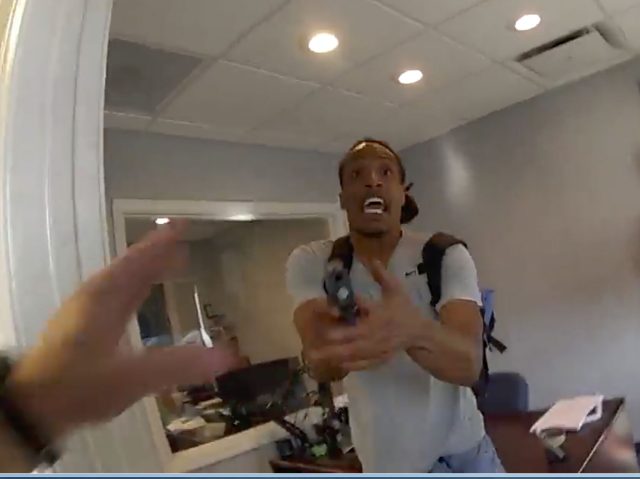The criminalization of black girls
Published 1:11 pm Monday, April 25, 2016
As the Black Lives Matter movement and protests in Ferguson and Baltimore have seized the nation’s attention, the names and stories of black men like Trayvon Martin, Michael Brown, Eric Garner and Tamir Rice have become synonymous with the discrimination that continues to face African Americans in the United States today.
But in a provocative new book, “Pushout: The Criminalization of Black Girls in Schools,” the academic and activist Monique W. Morris argues that too often discrimination faced by black women, particularly black girls in school, is overlooked. That’s why she begins her book by recounting not one of those famous police confrontations with young black men but another one involving 14-year-old Dajerria Becton, who was tackled to the ground by a police officer at school last year outside a pool party in McKinney, Tex. The officer, who was caught on camera, was forced to resign.
“The criminalization of Black girls is much more than a street phenomenon,” Morris writes. “It has extended into our schools, disrupting one of the most important protective factors in a girl’s life: her education.”
Morris has spent more than 20 years working at the intersection of gender, race and education. She’s the former vice president for economic programs, advocacy and research at the NAACP and a former college professor. For this book, she spent four years researching how race and gender-based discrimination in U.S. public schools and criminal justice systems in six big cities from San Francisco to New York affects black girls – in part by interviewing young women, age 15 to 23.
Ultimately, she concludes that too many schools are not sensitive to the unique needs and challenges of black girls. As a result, she says, they treat black girls with one brush, enforcing punitive disciplinary policies that send far too many into the juvenile justice system. Indeed, black girls represented 50.7 percent of the girls who multiple out-of-school suspensions in 2013, according to the Department of Education’s Office of Civil Rights . By contrast, black boys made up 39.9 percent of boys who multiple out-of-school suspensions.
And the disparities begin at a very young age. “Today, Black children are 18 percent of preschool enrollment, but 42 percent of preschool-age children who have had one out-of-school suspension,” Morris writes. “[B]etween 2002 and 2006, per-district suspension rates of Black girls increased by 5.3 percent compared to a 1.7 percent increase for Black boys.”
Black girls are punished at much higher rates, Morris argues, because stereotypes about black femininity are things we have widely accepted as true. (The title of the book refers to the systems through which girls are “pushed out” of the public education system because of disciplinary policies.)
To understand Morris’s approach, it is important to step back and understand the concept of “intersectionality,” an idea popular in feminist academic literature that holds that people’s multiple identities – race, class, gender, sexuality – can intersect with one another to create broader vulnerabilities. In this case, Morris writes, intersectionality means that a black girl experiences the disadvantages of being female compounded with the experience of being a racial minority.
Morris argues that educators too often apply stereotypes to the behaviors of black girls, assuming a certain “attitude.” She says, though, that the perceived “attitude” is actually a kind of response to “disrespectful or degrading triggers in their lives – many of which were present in their learning environments.”
By way of example, she profiles a Bay Area student named Malaika (a pseudonym) who had routinely experienced suspension since she was in first grade. Malaika’s perception is that the classroom is a place where she is encouraged to point out things that are wrong – but then is punished for it. “They’re always telling us to voice our opinions,” she tells Morris. “But then when we voice our opinion, we’re going to get in trouble. So that’s irritating.”
She gives an example of a time she believed she was standing up for herself, but she was ultimately punished for her behavior. She was reprimanded for talking in class, and her teacher began yelling at her: “I told my teacher . . . ‘You’re yelling at me and I don’t want you yelling at me,'” Malaika said. The situation escalated, and Malaika ended up having to work in the principal’s office for three days. Malaika felt she was being disrespected when she tried to “speak her truth,” Morris writes.
Morris also says schools fail to respond appropriately to the fact that black girls face higher levels of sexual victimization both inside and outside the classroom. About 19 percent of black girls are sexually assaulted or trafficked, which is “among the highest for any group in the nation,” Morris writes, citing a study by the Rape, Abuse, and Incest National Network.
The trauma of this victimization can follow girls into the classroom, where Morris interviewed girls who found it difficult to participate in the daily activities required in school because “in the hallways, in the classrooms . . . Black girls describe conditions in which their bodies are scrutinized, touched (often without their permission), and objectified in ways that make them feel self-conscious and constantly defensive,” Morris writes. That scrutiny of black girls’ bodies also extends to the teachers and administrators, who discipline girls based on their clothes and adherence to dress codes.
Morris interviewed one California student named Deja who talked about a time she was told to go home because she was wearing a pair of shorts on a hot day. She said while she was in the office, a white girl wearing similar clothes walked in and was given a pass to class without comment. After putting up a fight with administrators and pointing out that the white girl’s shorts were shorter than hers, Deja was given a pass to class. Deja said the administrator said to her, “‘I’m going to give you a pass this one time, but please don’t be letting the boys feel all on you and stuff.'”
Morris argues that Deja was kept from class out of a fear that her exposed body would distract her male classmates, while her white classmate was overlooked. This fear, Morris said, is based in “public imagination about the sexuality of black people,” particularly black women.
—
I spoke with recently Morris about the systemic inequities she details in “Pushout,” and the solutions she recommends for educators, parents, and policymakers alike. The interview has been edited for length and clarity.
Q. I wanted to start with a question about your style. You made your argument through storytelling and using anecdotes of these girls. Can you tell me a little bit about why you chose to use that specific form?
A. It’s central to my work to engage and – as much as possible – center the narrative of the affected populations. It’s consistent with my research method of using participatory action research. For me, as I have talked about and tried my best to offer a systemic critique, I really wanted to make sure that the girls’ stories drove our understanding of the statistics and really put a human face and scenario to a attest to the statistics, which are sometimes used independently and are often divorced from the real, lived experiences of people. I really wanted to make sure I maintained and preserved as much as possible the original language of the girls who have experienced school pushout, and what that looks like for them, and why they think it’s happening.
Q. I could definitely hear some of their voices in my mind as I was reading it.
A. Yeah, and I also believe in the healing power of the narrative. I think often when we’re talking about constructs of inequality, we tend to rely primarily on quantitative data, and not so much the storytelling. And yet, I think as human beings, we relate to those whose stories we know and can understand.
Q. Did you find yourself becoming emotionally involved with any of the girls?
A. Obviously, I feel a connection to some of the girls – particularly those whose stories are jarring and upsetting, you can’t be human and not respond to some of these stories in a way that makes you feel like you want to jump right in and intervene as much as you can. But in the research world, you have to maintain some degree of objectivity and maintain the professionalism, so I was not able to intervene.
Q. There’s not really much you can do when you’re in these positions.
A. Exactly, and that’s part of the researcher-practitioner-storyteller tension. But I still believe it’s important to center their narratives as we have policy and practice discussions to improve their conditions.
Q. At the end of your book, you have an appendix with conversation guides for girls and also for teachers and parents. Who do you envision as the audience you were writing this for?
A. I was hopeful that everyone would pick it up. I tried to write it in language that was accessible to girls experiencing pushout. But I also really was hopeful that the community of concerned adults, the educators, the parents, would also pick up the book, and that we would be able to begin to construct with the girls, language and intervention opportunities to respond to this issue. I like to think that much of what I propose in the book is actually not rocket science. Much of what I’m talking about is shifting consciousness and about developing new alternatives for their engagement. Some of that really involves creating new policy and legislation, and some of that is really about how we approach and see the needs of our girls – particularly for those who have been commercially sexually exploited or girls that have tremendous victimization histories.
I just left a school in New York. I was visiting with a group of girls about pushout and so many of these girls are accustomed to living with their own invisibility and have basic questions about why people see them the way they do, or why people construct narratives about their identity that aren’t consistent with their lived reality. Much of this book is about uplifting this concept that we can lead and teach with love. I’ve said in other spaces that I think that most educators go into this profession because they care about education and understand the promise of it in the lives of children. I really was hoping that when educators pick up this book, that they not get defensive, but that they really look at their own behaviors and critically examine the opportunities that are present in everyday interactions.
Q. I highlighted a quote here from your chapter called “Learning on Lockdown”: “We are also reminded that for girls accustomed to using violence as a response to feeling disrespected, being in a hyperpunitive environment may only reinforce negative behaviors that result in marginalization from schools.”
You argue that juvenile court schools were essentially structured in a way that made learning and rehabilitation more difficult for these girls. Why do you think the system is structured in this way?
A. There’s an entire movement to do away with juvenile prisons because we know that children who are in contact with the juvenile legal system are actually responding to their own victimization. That’s pretty consistent across the board.
There are some districts that I have spoken with that are doing a better job of responding to the educational needs of such a highly transient, high-need population, and those are not the ones that I highlighted here because those are not the typical institutions that interface with our children. However, I am encouraged by those institutions that are thinking outside the box and who are thinking about ways of repairing the relationships between girls who are in contact with the criminal legal system and schools while they are in detention.
I also think that when you are in hyper-punitive spaces, you really only have a very limited number of tools available to you to respond to kids who are conditioned to respond to conflicts with violence. When you look at the girls who are in contact with the criminal legal system, not only do they have extensive victimization histories, they also have a problematic history with schools. Even if they like school, the girls that I spoke with are girls who have had pretty intense relationships, particularly with respect to those who receive punitive, exclusionary discipline at a very early age. A lot of these girls were describing their first encounters with suspensions and expulsions in kindergarten and first grade. They pretty much learned that schools were places where you are punished and not given too many chances to explore and undo some of the things that you might have learned in other spaces.
When you couple that with the fact that black girls experience corporal punishment at extremely high rates, we’re teaching our children very early on that violence is how we respond to conflict, and when they get older and start using it with each other, we wonder where they learned it.
Q. It goes back to that line that you repeat a couple of times throughout the book: “Hurt people hurt people.”
A. Exactly. I repeated it on purpose.
At the center of this engagement is how do we co-construct safety for our girls in schools so that they want to go to schools, they see schools as a rehabilitative place, and are not punished for their reaction to the oppression and victimization that they are experiencing in their lives.
Which is partly why I say it’s important for all of us to practice leading with love. When we do that, we’re able to see what this actually is, rather than dismiss it as a stereotypical attitude or begin a blaming game.
Q. So you started one of your chapters with an anecdote from your childhood when you said you remembered playing “Hide and Go Get Some.” I wonder if you did that because you see part of yourself in these girls?
A. I think for the most part, when I see the girls, I see myself because I really love black girls. I was a black girl, and I want them to know that they can achieve and overcome the barriers that they face. While we see so many examples of women who have faced tremendous victimization histories who go on to become successful moguls, we miss a step by not encouraging girls to see the value of education in all of that.
We’re pretty comfortable talking about education as a critical protective factor in the lives of girls globally, but we almost step over the girls in our own backyards to talk about girls globally, ignoring that they’re part of that structure. I think it’s an opportune time for us to really uplift the value of education in the lives of girls right here at home who are still facing many of the barriers that keep them from completing school.
We have this rhetoric domestically about black girls who have left school, and our rhetoric is that they’ve chosen that, whereas the story we tell ourselves about girls who can’t get their education abroad and in other countries is that they’re victims of their situations.
And that’s often what has occurred in the lives of black girls, is that they’re “choosing” this lifestyle, “they’re making these choices because they have everything available to them.” Without thinking about how we come to respond to the historical trauma that they’re facing, that many are responding to the level of additional trauma that they face in and out of school that make it very difficult for them to focus on learning.
I just visited a school in New York where the question was posed at the outside, “How many of you have to consider your safety on your way to and from school?” And almost all the hands went up.
It’s really important for us not to forget that these are kids and I try to emphasize that as much as possible in the book. These are children. These are our kids. We can’t throw away kids. I don’t believe in that.
Education is a critical protective factor against conflicts with the criminal and juvenile legal systems for girls. When we push them away from schools, we’re increasing the likelihood that they will experience harm, and that is just not excusable.
We’ve got to think differently about how we can engage our girls to ensure that they receive the education they need in order to be productive members of our society, and so that they can understand their own value in constructing and advancing our country.
race-girls






